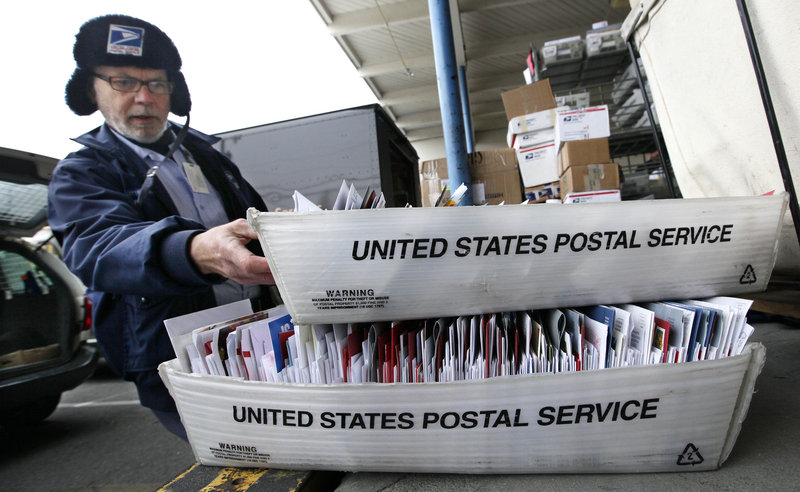IOWA CITY, Iowa – The U.S. Postal Service’s plan to close 252 mail processing facilities and cut 28,000 jobs by the end of next year may help the agency curb its mounting financial problems, but it faces big practical obstacles.
Deciding which plants to close will be difficult and face opposition from community leaders. Actually closing all of them could take a few years, and most workers will stay employed under union rules. The bulk of the job cuts will actually come from attrition and retirements, not layoffs, while the remaining work force is shuffled into new locations and positions.
What’s about to unfold in cities from Reno, Nev., to Chicago will illustrate the complexity of cutting a work force protected by strong union contracts and shrinking operations dependent on intricate logistics.
“The downsizing or the demise of the postal service, it’s going to be a mess and it’s going to be a mess for a long time,” said John Zodrow, a retired Denver attorney and former Postal Service arbitrator who wrote a book about its labor relations. “It’s a huge undertaking.”
The proposed closures are among several moves aimed at helping the agency avert bankruptcy and adjust to declining mail volume as customers migrate to the Internet to communicate and pay bills. Delivery changes announced last week would virtually eliminate the chance for stamped letters to arrive the next day for the first time in 40 years and pave the way for closing more than half of the 461 plants where the mail gets processed and sorted.
Postal officials say they can save up to $3 billion by 2015 by following through with the cuts — getting rid of buildings, running equipment more efficiently, operating fewer mail trucks and cutting employees.
The postal service’s manager of collective bargaining said Monday that the agency foresaw the “potential for significant attrition” given that more than 20 percent of postal workers were eligible for early retirement. Managers and non-career employees could be laid off, while no decisions have been made on how any early retirement incentives will be offered, said the official, Kevin Rachel.
Most workers in the facilities are represented by the American Postal Workers Union, which reached a four-year contract in May guaranteeing that its 220,000 clerks and maintenance employees cannot be laid off or transferred more than 50 miles away.
Employees in plants that are closed will have to decide whether to relocate to the places where work is consolidated, which will need to rapidly expand in size. If they stay behind, they will fight for remaining jobs in the area and will likely have to switch duties. Many post offices, for instance, have deliberately left open retail clerk and letter-carrying jobs.
Zodrow said the turbulence could motivate more workers to take early retirement, which he warned would be a mistake for some. Postal workers do not have skills that transfer well to the private sector and are making more than they would elsewhere, he said.
The outcome of negotiations between the postal service and unions representing mail handlers and letter carriers, which both have deadlines this week, could be crucial in determining how cost-cutting plans are carried out. Mail handlers, who are represented by a union of 47,000 members, are bargaining about job protections and reassignment rules.
Kate Bronfenbrenner, director of labor education research at Cornell University, said she wonders whether the postal service will get as many retirements as it is counting on. “Nobody in this economy is retiring unless they are really ready. There has to be some incentive,” she said.
The agency first has to decide which plants to close. While they have had a list of 252 prospective targets since September, postal officials say final decisions will not be made until they assess the potential savings, the impact on mail delivery and whether other plants in the area could handle the volume.
There will be intense local opposition. The city council in Reno, Nev., passed a resolution Wednesday protesting any plans to close its processing facility and move 177 jobs to West Sacramento, Calif., one of the proposals under review. Members of Congress in Iowa, Illinois and elsewhere are already going to bat for local plants. Businesses that rely on speedy mail delivery are fighting, too.
Send questions/comments to the editors.



Success. Please wait for the page to reload. If the page does not reload within 5 seconds, please refresh the page.
Enter your email and password to access comments.
Hi, to comment on stories you must . This profile is in addition to your subscription and website login.
Already have a commenting profile? .
Invalid username/password.
Please check your email to confirm and complete your registration.
Only subscribers are eligible to post comments. Please subscribe or login first for digital access. Here’s why.
Use the form below to reset your password. When you've submitted your account email, we will send an email with a reset code.